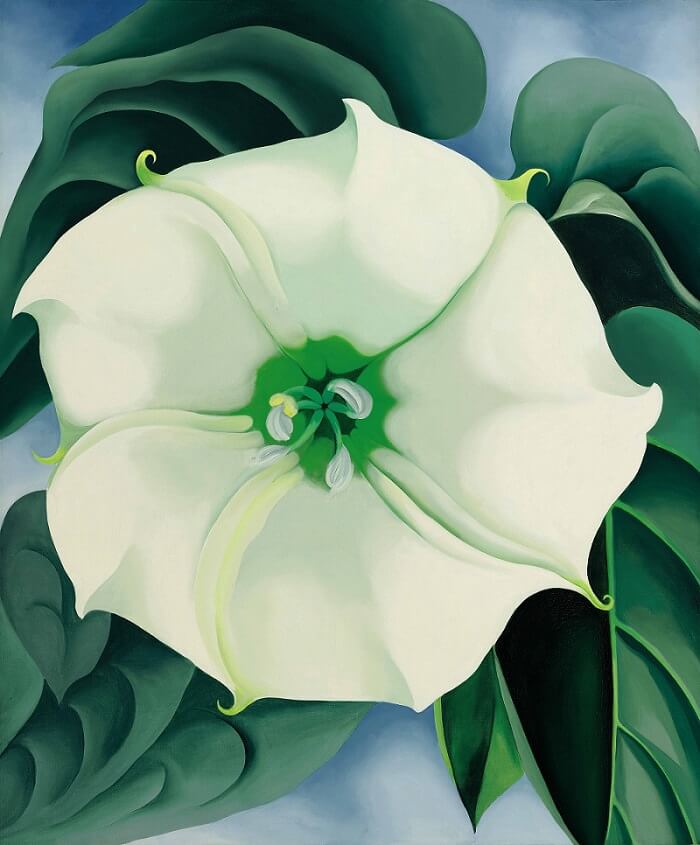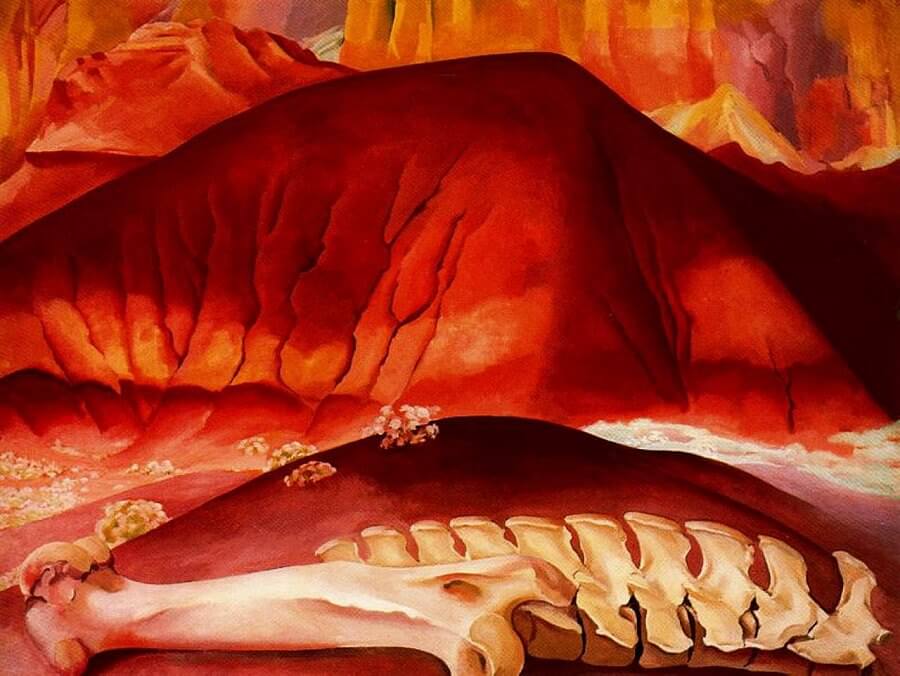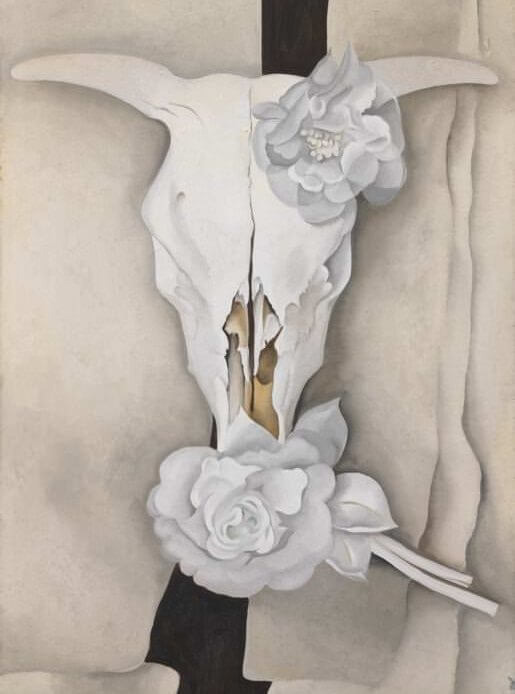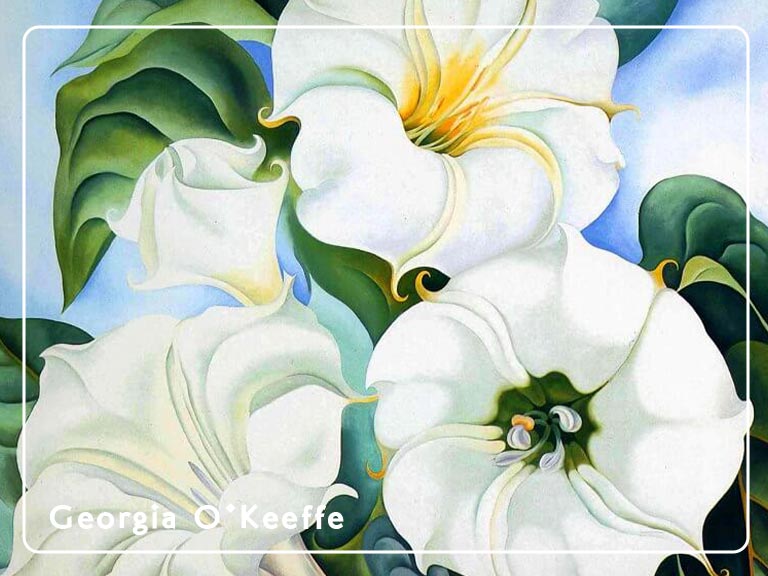Georgia O’Keeffe, born on November 15, 1887, in Sun Prairie, Wisconsin, was a pioneering figure in American art. Renowned for her unique style, bold compositions, and vibrant depictions of natural forms, O’Keeffe remains one of the most influential and celebrated artists of the 20th century. Through her evocative paintings of flowers, landscapes, and abstract interpretations, she redefined the boundaries of artistic expression and left an indelible mark on the art world.
O’Keeffe’s artistic journey began during her time at the School of the Art Institute of Chicago and later at the Art Students League in New York. While her early works embraced traditional techniques, she soon found her distinctive artistic voice.
Inspired by the landscapes of New Mexico, where she lived and worked for much of her life, O’Keeffe developed a unique style characterized by magnified views, simplified forms, and vibrant colors. Her ability to capture the essence of her subjects, whether flowers, bones, or landscapes, allowed her to transcend traditional representation and evoke a sense of emotional and spiritual connection.
Distinctive Style and Iconic Subjects:
Georgia O’Keeffe is best known for her larger-than-life depictions of flowers, such as her iconic painting “Jimson Weed/White Flower No. 1” (1932). These close-up, detailed compositions of flowers—often shown at an exaggerated scale, invite viewers to explore the intricate beauty and sensual qualities of the natural world.

In addition to her floral works, O’Keeffe’s landscapes and abstract interpretations of nature became equally influential. Paintings like “Red Hills and Bones” (1941) and “Black Mesa Landscape, New Mexico/Out Back of Marie’s II” (1930) capture the essence of the Southwestern United States, with their bold colors, sweeping lines, and a sense of vastness and isolation.

O’Keeffe’s works often exhibited a sensuous and feminine quality, which some critics interpreted as a celebration of female sexuality. Her ability to merge the personal and the universal, the sensual and the abstract, made her an exceptional artist ahead of her time.
Among Georgia O’Keeffe’s remarkable body of work is the intriguing painting titled “Cows Skull with Calico Roses,” completed in 1931. This piece exemplifies O’Keeffe’s ability to transform mundane objects into powerful symbols of beauty, fragility, and the cycle of life.
Cows Skull with Calico Roses, features a bleached cow skull placed atop a desolate landscape, juxtaposed with vibrant calico roses. The stark contrast between the stark, weathered bone and the lively, delicate flowers creates a visually striking composition. O’Keeffe’s use of bold colours and precise lines draws attention to the intricate details of both the skull and the roses, capturing the viewer’s gaze.
This painting reflects O’Keeffe’s fascination with the natural world, where she found beauty even in unconventional subjects. By incorporating the cow skull, a symbol of death and decay, alongside the lively and colourful calico roses, O’Keeffe explores the interconnectedness of life and mortality. The juxtaposition invites contemplation on the fleeting nature of existence and the inevitable cycle of birth, growth, decay, and rebirth.

Legacy and Where to View O’Keeffe’s Art:
Georgia O’Keeffe’s contributions to American modernism and her unique artistic vision have had a lasting impact on subsequent generations of artists. Her ability to distill the essence of her subjects into bold and powerful visual statements continues to inspire and resonate with audiences today.
To view a comprehensive collection of O’Keeffe’s works, the Georgia O’Keeffe Museum in Santa Fe, New Mexico, offers a rich display of her art, as well as an insight into her life and creative process.
If you would like to receive a roundup of all of our blog posts once a week to keep you inspired in your inbox, why not sign up to our newsletter. You can access our sign up at the top of our page. If you are a London Art College student and you would like your artwork featured here, drop us a line at any time.

